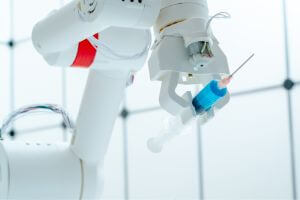Tokyo Researchers Develop Bipedal Biohybrid Robot with Underwater Mobility
Tokyo Researchers Develop Bipedal Biohybrid Robot with Underwater Mobility: Researchers at the University of Tokyo have developed a robot that utilizes a biological muscle for movement. The University, in a press release, disclosed that Professor Shoji Takeuchi and his team from the Graduate School of Information Science and Technology have engineered a biohybrid bipedal robot, merging an artificial skeleton with a biological muscle, capable of walking and pivoting underwater.
Biohybrid robots have the potential to offer innovative solutions in fields such as medicine, environmental research, or soft robotics. However, their design and usage also raise ethical and safety concerns, especially regarding the control and manipulation of biological components.
For years, they have been the subject of numerous studies, advanced further by 3D printing. However, until now, these robots, while able to walk and make wide turns, struggled with precise movements in confined spaces, limiting their practical use, especially in search and rescue operations.
The robot developed by Professor Shoji Takeuchi and his team represents a significant breakthrough in this field. Unlike its predecessors, it can perform rotational movements on one foot, enabling it to maneuver in restricted spaces and navigate obstacles with great precision.
The researchers detailed their work in the journal Matter. Exposed to air, the muscle tissue dries out and loses elasticity, so the robot was designed to be suspended in water. It consists of a float to maintain an upright posture in a culture medium, a polymer body incorporating two flexible substrates, 3D-printed legs, and skeletal muscle tissues cultivated from rat cells.
Professor Takeuchi commented:
"By incorporating living tissues into a robot framework, we can harness the superior functions of living organisms. In our latest research, we combined lab-cultivated skeletal muscle tissue with flexible artificial legs and 3D-printed feet. Using muscle tissue to move the legs allowed us to create a small robot with efficient, silent movements and a gentle touch."
Researchers manually stimulate each leg of the robot using gold electrodes, simulating brain electrical signals to induce muscle tissue contraction. This stimulation, performed at five-second intervals, allows the robot to move at a speed of 5.4 millimeters per minute. Although this speed may seem modest, the robot's leg movements are comparable to other biohybrid robots, demonstrating its efficiency in locomotion.
Professor Takeuchi explained:
"At first, we were not sure if bipedal walking was possible, so it was really surprising when we succeeded. Our biohybrid robot managed to perform forward and backward movements with bipedal walking by effectively balancing four key forces: muscle contractile force, restorative force of the flexible body, gravity acting on the weight, and buoyancy of the float."
While the robot is currently limited to operating underwater due to the muscle's sensitivity to dehydration, researchers are considering future enhancements to enable terrestrial use. Thicker muscles with their nutrient reserves could be the key to overcoming this limitation, paving the way for broader applications of these robots in various environments.
Professor Takeuchi concluded:
"Our results provide valuable insights for advancing soft and flexible robots powered by muscle tissues and have the potential to contribute to a deeper understanding of biological locomotion mechanisms, allowing us to mimic human walking nuances more closely in robots."



